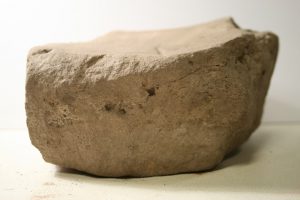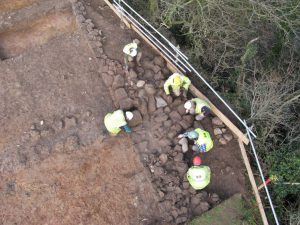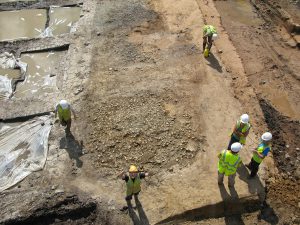The river terrace at Stainton West was sculpted by the glacial outwash channels that laid down the sandy gravel deposits that underlie the site, at the end of the last Ice Age (early-Holocene period 10,300–8,500). As the glaciers retreated, the previously depressed landscape rebounded, or rose, resulting in the formation of a number of terraces which were intersected by channels. The emergence of the palaeochannel in question developed later during the later mesolithic period (or mid-Holocene), and started to infill at the same time that the human activity on site began. The site appears to have occupied a significant position in the floodplain, where the river potentially narrowed and was constrained by several floodplain islands, which would have possibly facilitated crossing at this point. High points or promontories at the edge of a wetland area would have been very attractive locations for early prehistoric communities to exploit the rich wetland and river resources present. The sequence of deposits forming the Mesolithic organic deposit indicates a shallow channel, which was gradually drying out. The deposits filling the channel contained a particularly well-preserved palaeoenvironmental assemblage, including deposits of waterlogged wood, some of which was worked. At various horizons within the channel, lithic, wooden and ceramic cultural material was recovered. Radiocarbon dating suggests that the earliest deposits in the channel formed in, at least, the Later Mesolithic period and the latest during the Late Bronze Age. The accumulation of the majority of the wood indicates a significant reduction in the flow of the river and encroachment of vegetation into the channel. It is possible that some of the wood recorded could have fallen in from overhanging branches and the river banks, but it is just as likely that some of this wood was deliberately introduced into the channel. A number of gnawed tree trunks and branch ends indicate beaver activity. Mesolithic communities may have first been drawn to the Stainton West site as a result of localised woodland disturbance caused by this beaver clearance. These environments would have been attractive to hunter-gatherer groups, providing ready-made coppice stems that would be ideal for firewood, arrow shafts or harpoons. The new tree growth would also have encouraged foraging and hunting resources, and the ponding of the watercourse may have provided good fishing. These conditions could have been instrumental in the selection of this particular place for camps or more permanent settlement, resulting in the lithic scatter and features within the grid square area. It is within this deposit that the trident was recovered, and other



